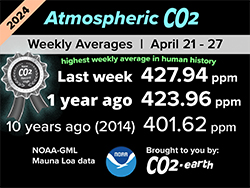Why NFTs Are The Most Important Digital Asset You Need to Know About Now!
NFTs and Digital Rights
Welcome to Hoken Tech.
Non-fungible tokens (NFTs) have revolutionized digital ownership, reaching a staggering market capitalization of over $7 billion. With thousand holders worldwide and several "whales" holding NFTs valued at over $1 million each, understanding the legal framework surrounding these digital assets has become crucial.
The emergence of NFTs has created a new paradigm in digital ownership, forcing legal experts and market participants to reconsider traditional concepts of property rights, intellectual property, and digital asset management. This transformation has particularly impacted sectors such as fashion, sports, gaming, and art, where unique digital assets have gained unprecedented value and recognition.
The NFT Market Evolution
The NFT market has experienced exponential growth since its inception in 2017, evolving from a niche cryptocurrency experiment to a mainstream digital asset class. Starting from a modest market capitalization of $105 million in 2017, the sector has exploded to exceed $7 billion by 2025. This remarkable growth is exemplified by notable sales such as CryptoPunk 9998, which achieved a value of approximately $500 million after changing hands five times.
The market's expansion has been driven by increasing institutional adoption, celebrity endorsements, and the growing recognition of digital assets as legitimate investment vehicles. The emergence of specialized platforms and marketplaces has further facilitated this growth, creating efficient secondary markets for NFT trading and value appreciation.
Legal Considerations for NFT Ownership
The legal framework surrounding NFT ownership presents a complex web of rights and obligations that extends beyond simple digital possession. When acquiring an NFT, buyers must understand that they're often purchasing a limited license rather than full intellectual property rights.
These licenses typically restrict usage to private, non-commercial purposes and may explicitly prohibit certain activities such as creating derivative works or participating in digital exhibitions without additional permissions.
The relationship between physical ownership of the NFT and the underlying intellectual property rights requires careful consideration, as these rights often remain with the original creator or brand, creating a multi-layered ownership structure that must be carefully navigated through proper legal documentation and smart contract implementation.
Fashion Industry and NFTs
The fashion industry's adoption of NFTs represents a natural evolution from digital skins and filters in gaming platforms to exclusive, blockchain-verified digital fashion items. Major fashion houses have embraced NFTs as a means to extend their brand presence into the digital realm while maintaining the exclusivity and scarcity that characterizes luxury goods.
This transition has created new opportunities for brand engagement and revenue generation, with some digital fashion pieces selling for prices comparable to their physical counterparts. The integration of blockchain technology has also provided solutions to long-standing industry challenges, particularly in authentication and counterfeiting prevention, while creating new revenue streams through programmable royalties on secondary market sales.
Security and Compliance
Security and compliance in the NFT space require a sophisticated approach to risk management that encompasses both technical and regulatory considerations. Platforms must implement robust anti-money laundering (AML) checks, monitor for market abuse, and maintain comprehensive transaction histories.
The implementation of the DAC7 Directive and various cryptocurrency regulations has created a complex compliance landscape that requires careful navigation.
Platform operators must balance security requirements with user experience, implementing measures such as multi-factor authentication and secure wallet integration while maintaining accessibility and ease of use. The challenge of preventing market manipulation and ensuring transparent pricing mechanisms remains a key focus for both platforms and regulators.
Best Practices for NFT Contracts
The foundation of successful NFT projects lies in well-structured contracts that clearly define all aspects of the digital asset's creation, sale, and ongoing management.
These contracts must address multiple layers of rights and obligations, including clear ownership definitions, specific usage rights, and mechanisms for royalty distribution. Platform obligations need to be explicitly stated, including security measures, maintenance requirements, and dispute resolution procedures.
Termination consequences must be carefully considered, particularly regarding the continued existence and accessibility of the NFT post-contract termination. The choice of applicable law and jurisdiction becomes especially important given the global nature of NFT transactions and the varying regulatory approaches across different jurisdictions.
Conclusion
The NFT ecosystem continues to evolve rapidly, presenting both opportunities and challenges for stakeholders across various industries. The success of NFT projects increasingly depends on the careful consideration of legal, technical, and market factors. As the market matures, the importance of robust legal frameworks and clear contractual arrangements becomes ever more critical.
Organizations entering the NFT space must prioritize comprehensive legal planning alongside their technical and creative development to ensure sustainable success in this dynamic market. The future of NFTs lies in the successful integration of innovative technology with sound legal principles, creating a foundation for continued growth and adoption across industries.
nft, hoken tech, blockchain, cryptoart, eos, nft art, artificial intelligence, ai, watch authentication, crypto artist, nfts, web3, nft game, web3 game, videogame, nft distributor, videogame blockchain







